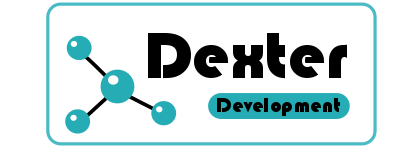When using softwares like VMD to visualize membranes where lipids exhibit interdigitation as in our case, it will very useful if you can sort out those lipids which specifically exhibit this phenomenon. And this task is not straight forward as it seems. But there are neat tricks which you can useto select them. We know that in our case lipid defects initiates interdigitation. See my previous post for the explanation. Also we know that waters getting trapped in these lipid defects. So the first step is to select those waters. It can be done in VMD as below:
(water pbwithin 4 of (lipid and (name C314 C214)))
C314 and C214 are the bottom-most carbon atoms from the fatty acid tails of DMPC lipids. We are selecting water within 4 Angstrom of these carbons. Now select the lipid atoms within 4 angstrom of these selections:
(lipid pbwithin 4 of (water pbwithin 4 of (lipid and (name C314 C214))))
And finally, select the complete fragment(otherwise the selection of lipids will be like broken atoms here and there.)
same fragment as (lipid pbwithin 4 of (water pbwithin 4 of (lipid and (name C314 C214))))
And now if you want to select the non-interdigitated lipids, just invert the selection:
lipid and not (same fragment as (lipid pbwithin 4 of (water pbwithin 4 of (lipid and (name C314 C214)))))
See my youtube videos below which illustrates these selections(you can reduce the video speed in youtube settings to see the evolution/emergence of interdigitation clearly):
The blue colored lipids are those in the lipid defect areas, which is beginning to show interdigitation or is exhibiting it. The red region is the non-interdigitated ones(including fluidy lipids/ gel-phase lipids).
Few features of the interdigitated lipids are:
- They exhibit strong positive correlation in their motion among them. Very sychronized motion among interdigitated lipids!
- There is a phase separation between interdigitated and other lipids.
References
My previous posts:
To learn about VMD and PDB file format, see here:
- https://www.steemstem.io/#!/@dexterdev/visualizing-bio-molecules-in-computer-part-1-let-us-inspect-a-pdb-file-and-see-it-using-vmd
- https://www.steemstem.io/#!/@dexterdev/visualizing-bio-molecules-in-computer-part-2-introduction-to-tcl-scripting-environment-in-vmd-1-sbd-prize-task-inside
To learn about the concepts in All-atom molecular dynamics see articles below:
- https://www.steemstem.io/#!/@dexterdev/classical-molecular-dynamics-series-part-1-the-fundamentals
- https://www.steemstem.io/#!/@dexterdev/classical-molecular-dynamics-series-part-2-the-force-field
- https://www.steemstem.io/#!/@dexterdev/classical-molecular-dynamics-series-part-3-solving-the-molecular-dynamics-equation
To setup and run simulations in NAMD software, see below:
- https://www.steemstem.io/#!/@dexterdev/classical-molecular-dynamics-series-part-4a-let-us-setup-a-simulation-and-run-it
- https://www.steemstem.io/#!/@dexterdev/classical-molecular-dynamics-series-part-4b-running-small-systems-on-your-computer
- https://www.steemstem.io/#!/@dexterdev/let-us-cool-dmpc-bilayer-lipids-an-18-day-long-molecular-dynamics-experiment-on-hpc-facility
Textbook references:
- "Statistical Mechanics: Theory and Molecular Simulations" by Mark E. Tuckerman
- "Molecular Modelling: Principles and Applications" by Andrew R. Leach
- "Computer Simulation of Liquids" by D. J. Tildesley and M.P. Allen
- "Thermal Biophysics of Membranes" by Thomas Heimburg
References specific to NAMD and VMD:
#steemSTEM
#steemSTEM is a very vibrant community on top of STEEM blockchain for Science, Technology, Engineering and Mathematics (STEM). If you wish to support steemstem visit the links below:

Quick link for voting for the SteemSTEM Witness(@stem.witness)
Delegation links for @steemstem give ROI of 65% of curation rewards
(quick delegation links: 50SP | 100SP | 500SP | 1000SP | 5000SP | 10000SP).
Also visit and create your STEM posts using steemstem app here: https://www.steemstem.io
You can also set @steemstem as beneficiary.
Follow me @dexterdev
____ _______ ______ _________ ____ ______
/ _ / __\ \//__ __/ __/ __/ _ / __/ \ |\
| | \| \ \ / / \ | \ | \/| | \| \ | | //
| |_/| /_ / \ | | | /_| | |_/| /_| \//
\____\____/__/\\ \_/ \____\_/\_\____\____\__/

credit: @mathowl
Bye now!
This post has been voted on by the SteemSTEM curation team and voting trail in collaboration with @curie.
If you appreciate the work we are doing then consider voting both projects for witness by selecting stem.witness and curie!
For additional information please join us on the SteemSTEM discord and to get to know the rest of the community!